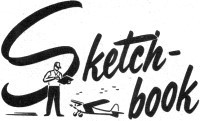
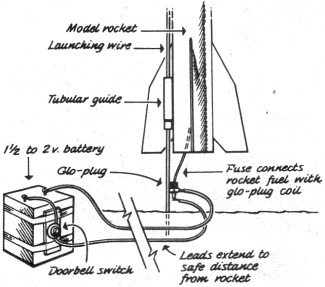
Safety-minded James Happ, North Brook, IIIinois, uses glo-plug
to ignite model rocket. Lengthy wires make circuit with battery.
Fuse ignited when switch closes circuit. Hazards lessened.
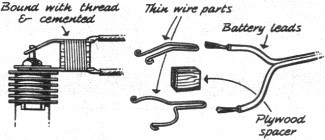
Homemade booster battery clip is from Mitsuo Katayama, San Pedro,
California. Turned back ends of wire fittings makes contact
easy. Plywood block keeps battery leads apart.
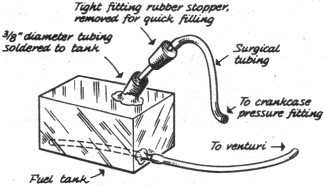
Clif Norman, Philadelphia, Pennsylvania, offers answer to problem
of quick-filling pressure tank. Removable stopper allows fast
fueling, quick resealing.
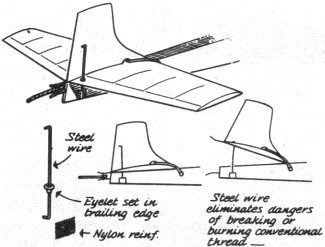
Practical solution to burned or broken stabilizer pop-up retainer
threads is steel wire member. William Kakoni, New York City,
anchors thin wire to fuselage with nylon ·patch. |

See original page.
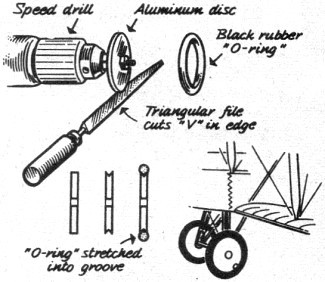
Neat scale-like wheels for World War I models are produced by
Alfred Epstein, Montreal, Canada, using "O-ring" oil seals for
tires and turned aluminum discs, grooved, for wheels.
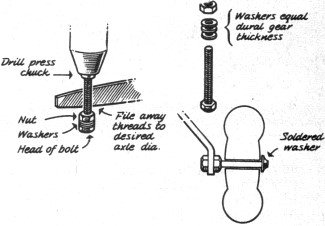
English modeler Alan Thomas submits neat axle for heavy-duty
dural landing gears. Turned-down bolt body fits wheel precisely;
threads left for bolting to leg endl
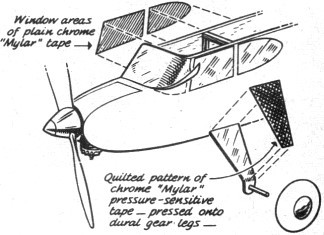
Use of pressure-sensitive "Mylar" chrome materials is suggested
by J. W. Scherer, Wyckoff, New Jersey. Smooth chrome quickly
cut and positioned for windows; fancy textures for landing gear.
|